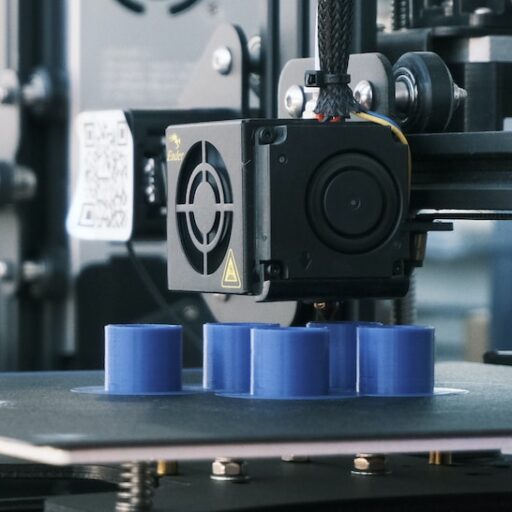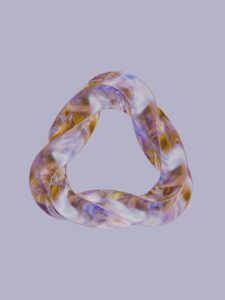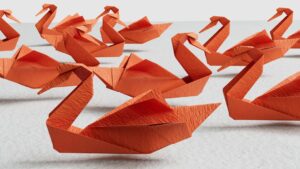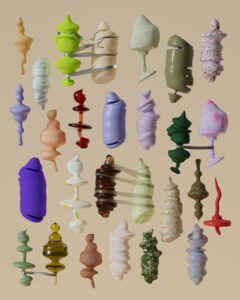Support our educational content for free when you purchase through links on our site. Learn more
3D Printed: Unleashing the Power of Additive Manufacturing [2024] 🖨️

Quick Answer: 3D printing, also known as additive manufacturing, is a revolutionary technology that allows you to create physical objects from digital designs. With a 3D printer, you can bring your imagination to life and make everything from toys and jewelry to prosthetics and architectural models. It’s a game-changer in various industries, offering endless possibilities for innovation and customization.
Table of Contents
- Quick Answer
- Quick Tips and Facts
- Background: The Rise of Additive Manufacturing
- The 3D Printing Process: From Design to Physical Object
- Choosing the Right 3D Printer for Your Needs
- Materials: Exploring the World of Filaments and Resins
- Applications: How 3D Printing is Transforming Industries
- Troubleshooting: Common Issues and How to Solve Them
- FAQ
- Conclusion
- Recommended Links
- Reference Links
Quick Answer
3D printing, also known as additive manufacturing, is a groundbreaking technology that allows you to turn digital designs into physical objects. By layering materials one on top of another, a 3D printer can create intricate and complex shapes that were once impossible to achieve through traditional manufacturing methods. From small trinkets to large-scale prototypes, 3D printing opens up a world of possibilities for creators, designers, and innovators like you! ✨
Looking to get started with 3D printing? 👉 CHECK PRICE on: Thingiverse | Cults3D | Yeggi | Free3D | MyMiniFactory | Pinshape | CGTrader | TurboSquid | 3Dexport
Quick Tips and Facts
- 3D printing is a form of additive manufacturing, where objects are built layer by layer from a digital design.
- The most common 3D printing technologies include Fused Deposition Modeling (FDM), Stereolithography (SLA), and Selective Laser Sintering (SLS).
- PLA (Polylactic Acid) and ABS (Acrylonitrile Butadiene Styrene) are popular filament materials used in FDM printers.
- SLA printers use liquid resin that is cured by a UV light source to create highly detailed prints.
- SLS printers utilize a laser to sinter powdered materials, such as nylon, into solid objects.
- 3D printing is used in various industries, including healthcare, automotive, aerospace, and fashion.
- The cost of 3D printers has significantly decreased over the years, making them more accessible to individuals and small businesses.
- There are numerous online platforms where you can find and download 3D printable designs, such as Thingiverse, Cults3D, and MyMiniFactory.
Background: The Rise of Additive Manufacturing

In the not-so-distant past, manufacturing was limited to subtractive methods, where material was removed from a block to create a desired shape. However, with the advent of 3D printing, a new era of manufacturing emerged. Additive manufacturing, as it is technically known, allows you to build objects layer by layer, adding material where it’s needed and minimizing waste. This revolutionary approach has transformed industries and sparked a wave of innovation.
The concept of 3D printing dates back to the 1980s, but it wasn’t until the early 2000s that the technology started gaining traction. As patents expired and new advancements were made, 3D printers became more affordable and accessible to the masses. Today, you can find 3D printers in homes, schools, and businesses around the world, empowering individuals to turn their ideas into reality.
The 3D Printing Process: From Design to Physical Object
To understand how 3D printing works, let’s take a closer look at the process:
-
Design: The first step is to create a digital 3D model of the object you want to print. This can be done using computer-aided design (CAD) software or by downloading pre-made designs from online repositories.
-
Slicing: Once you have your 3D model, it needs to be sliced into thin layers. Slicing software takes care of this process, determining the path the printer will follow to create each layer.
-
Printing: With the sliced file ready, it’s time to start printing. The 3D printer heats up the chosen material, whether it’s filament or resin, and deposits it layer by layer according to the instructions from the sliced file.
-
Post-Processing: After the printing is complete, you may need to remove support structures, clean the print, and perform any necessary finishing touches, such as sanding or painting.
-
Enjoy: Voila! Your 3D printed object is ready to be admired, used, or showcased to the world.
Choosing the Right 3D Printer for Your Needs
When it comes to selecting a 3D printer, there are several factors to consider. Here are some key aspects to keep in mind:
-
Print Quality: The resolution and precision of a 3D printer determine the level of detail it can achieve. Higher resolution printers are ideal for intricate designs and small objects.
-
Build Volume: The build volume refers to the maximum size of the objects you can print. If you plan on printing large-scale models or functional parts, a printer with a larger build volume is essential.
-
Printing Technology: Different printing technologies offer unique advantages and disadvantages. FDM printers are affordable and versatile, while SLA printers excel in producing highly detailed prints. SLS printers are ideal for creating strong and durable objects.
-
Ease of Use: Consider the user interface, software compatibility, and overall user experience when choosing a 3D printer. Some printers are more beginner-friendly, while others offer advanced features for experienced users.
-
Price: 3D printers come in a wide range of prices, from budget-friendly options to high-end professional machines. Set a budget that aligns with your needs and explore the options within that range.
Remember, the perfect 3D printer for you depends on your specific requirements and budget. Do your research, read reviews, and compare different models before making a decision.
Materials: Exploring the World of Filaments and Resins
One of the exciting aspects of 3D printing is the wide variety of materials you can use to bring your designs to life. Here are some popular options:
-
PLA: Polylactic Acid (PLA) is a biodegradable and easy-to-print filament. It’s commonly used for prototypes, toys, and decorative objects. PLA comes in a range of colors and is a great choice for beginners.
-
ABS: Acrylonitrile Butadiene Styrene (ABS) is a durable and impact-resistant filament. It’s suitable for functional parts, such as phone cases and mechanical components. ABS requires a heated print bed and proper ventilation due to its fumes.
-
Resin: Resin is used in SLA printers and offers exceptional detail and surface finish. It’s ideal for jewelry, miniatures, and dental models. Resin comes in various formulations, including standard, flexible, and castable.
-
Nylon: Nylon is a strong and flexible material used in SLS printers. It’s commonly used for functional prototypes, mechanical parts, and prosthetics. Nylon prints may require post-processing to achieve a smooth surface finish.
-
PETG: Polyethylene Terephthalate Glycol (PETG) is a versatile filament that combines the ease of printing with the durability of materials like ABS. It’s suitable for a wide range of applications, including mechanical parts and food containers.
These are just a few examples of the materials available for 3D printing. Each material has its own unique properties, so it’s important to choose the one that best suits your project’s requirements.
Applications: How 3D Printing is Transforming Industries
3D printing has revolutionized various industries, enabling new possibilities and disrupting traditional manufacturing processes. Here are some notable applications:
-
Healthcare: 3D printing has transformed the medical field, allowing for the creation of custom prosthetics, implants, and surgical models. It has also played a crucial role in producing personal protective equipment (PPE) during the COVID-19 pandemic.
-
Automotive: The automotive industry utilizes 3D printing for rapid prototyping, tooling, and even manufacturing end-use parts. It enables faster design iterations, reduces costs, and improves overall efficiency.
-
Aerospace: 3D printing has made significant advancements in aerospace manufacturing. It enables the production of lightweight components, reduces material waste, and allows for complex geometries that were previously unachievable.
-
Fashion: Designers are embracing 3D printing to create unique and avant-garde fashion pieces. From intricate jewelry to futuristic garments, 3D printing offers endless possibilities for customization and creativity.
-
Architecture: Architects and designers are using 3D printing to create intricate scale models, visualize concepts, and explore complex geometries. It allows for faster iterations and more accurate representations of their designs.
These are just a few examples of how 3D printing is transforming industries. As the technology continues to evolve, we can expect even more groundbreaking applications in the future.
Troubleshooting: Common Issues and How to Solve Them
While 3D printing is an incredible technology, it’s not without its challenges. Here are some common issues you may encounter and how to troubleshoot them:
-
Print Warping: Warping occurs when the corners of your print lift or curl. To prevent warping, ensure your print bed is properly leveled, use a heated bed (if applicable), and consider using a brim or raft for better adhesion.
-
Layer Shifting: Layer shifting happens when the layers of your print are misaligned. This can be caused by loose belts, insufficient lubrication, or excessive printing speeds. Check your printer’s mechanical components and adjust the settings accordingly.
-
Clogged Nozzle: A clogged nozzle can result in under-extrusion or failed prints. To unclog the nozzle, heat it up to the recommended temperature and use a needle or cleaning filament to remove any obstructions.
-
Stringing: Stringing occurs when thin strands of filament are left behind between different parts of your print. To minimize stringing, adjust the retraction settings in your slicing software and ensure your filament is properly stored to avoid moisture absorption.
-
Poor Adhesion: If your print is not sticking to the print bed, try cleaning the bed surface with isopropyl alcohol or applying a thin layer of adhesive, such as hairspray or glue stick. You can also increase the bed temperature for better adhesion.
Remember, troubleshooting is part of the 3D printing journey. Don’t get discouraged if you encounter issues along the way. With practice and patience, you’ll become a master of the craft!
FAQ

What is being 3D printed?
3D printing allows you to create physical objects from digital designs. By layering materials one on top of another, a 3D printer can bring your imagination to life. From toys and household items to intricate jewelry and architectural models, the possibilities are endless.
Read more about “What Products Can Be Made by 3D Printing? … 🖨️”
Why is 3D printing illegal?
3D printing itself is not illegal. However, certain objects or designs may be subject to legal restrictions. For example, printing copyrighted material without permission or producing weapons can be illegal. It’s important to understand and respect the laws and regulations in your jurisdiction when it comes to 3D printing.
Read more about “Why is 3D printing illegal?”
How much does it cost to make a 3D print?
The cost of 3D printing can vary depending on several factors, including the size of the object, the material used, and the complexity of the design. Generally, the cost is calculated based on the weight of the material used. It’s worth noting that 3D printing can be more cost-effective for small-scale production or customized items compared to traditional manufacturing methods.
Read more about “Which Industries Use 3D Printing in 2024? 🚀”
How do I 3D print things?
To 3D print an object, you’ll need a 3D printer, a digital 3D model, and slicing software. Start by designing or downloading a 3D model, then slice it into layers using the software. Load the sliced file onto your 3D printer, choose the appropriate settings, and start the printing process. Once the print is complete, remove it from the printer and perform any necessary post-processing.
Read more about “What Can I 3D Print to Make Money in 2023? …”
Conclusion

3D printing has revolutionized the way we create and manufacture objects. From rapid prototyping to customized production, this technology offers endless possibilities for innovation and creativity. Whether you’re a hobbyist, designer, or professional, a 3D printer can unlock a world of opportunities for you. So, why wait? Start exploring the exciting world of 3D printing today and unleash your creativity like never before!
Looking to embark on your 3D printing journey? 👉 CHECK PRICE on: Thingiverse | Cults3D | Yeggi | Free3D | MyMiniFactory | Pinshape | CGTrader | TurboSquid | 3Dexport
Recommended Links
- Beginner’s Guides
- 3D Printable Objects
- Commercial 3D Printing Projects
- 3D Printing Techniques
- Free 3D Models
- How to Print 3D Models from Thingiverse 2024 🖨️





